In this series we’ll see why birds that eat crayfish usually shake them violently before swallowing them. It’s a behavior that pays off.
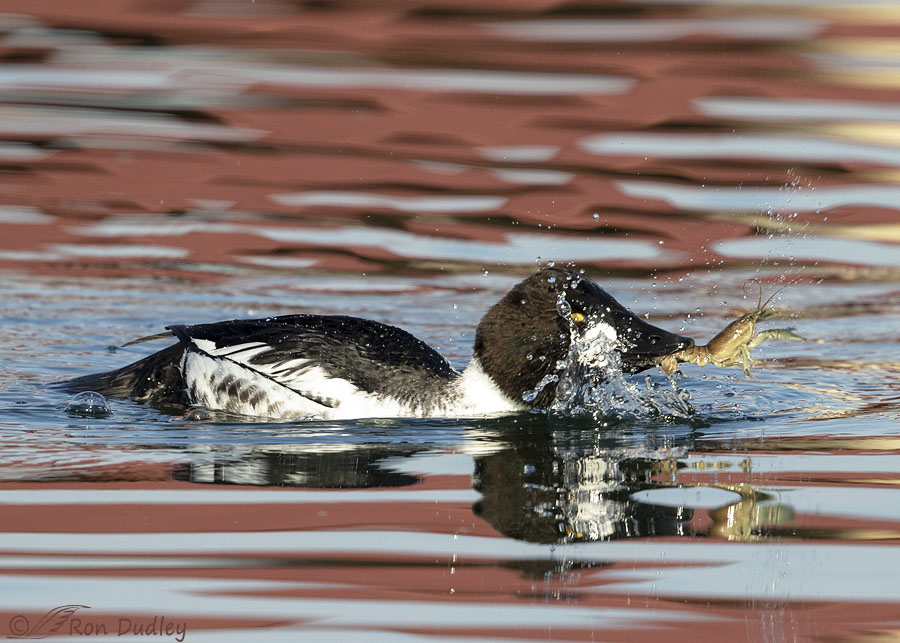
Yesterday morning this young male Common Goldeneye proved to be an excellent hunter, even at his relatively young age. In just a few minutes I watched and photographed him as he caught and ate three crayfish. This is crayfish #1.
Most birds I see with crayfish prey shake the stuffing out of them before eating them, which is what this guy was doing. The purpose of shaking them is partly to stun or kill the crayfish but it often has another purpose that will become evident later in this post.
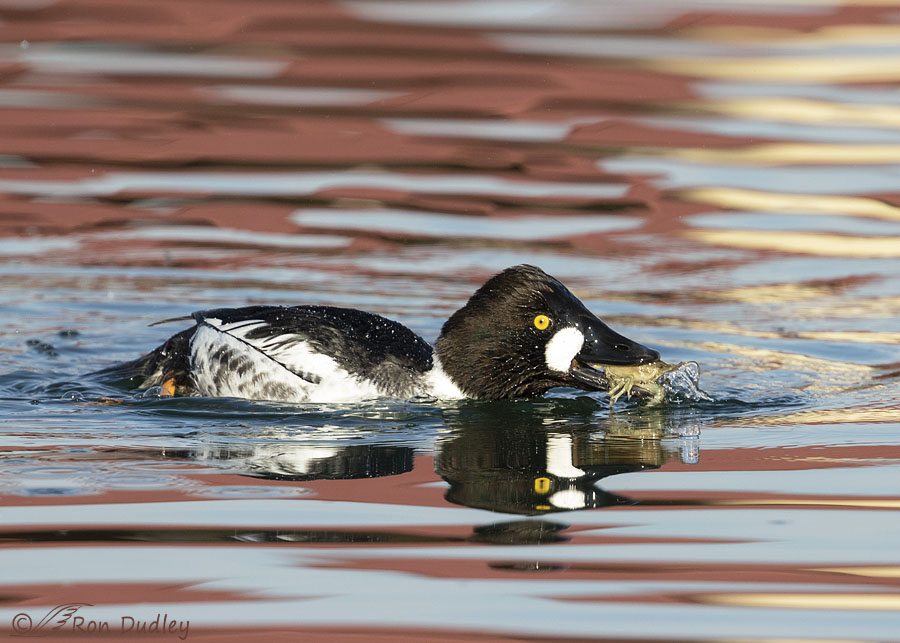
Soon after this photo was taken he turned his back to me and swallowed the crayfish.
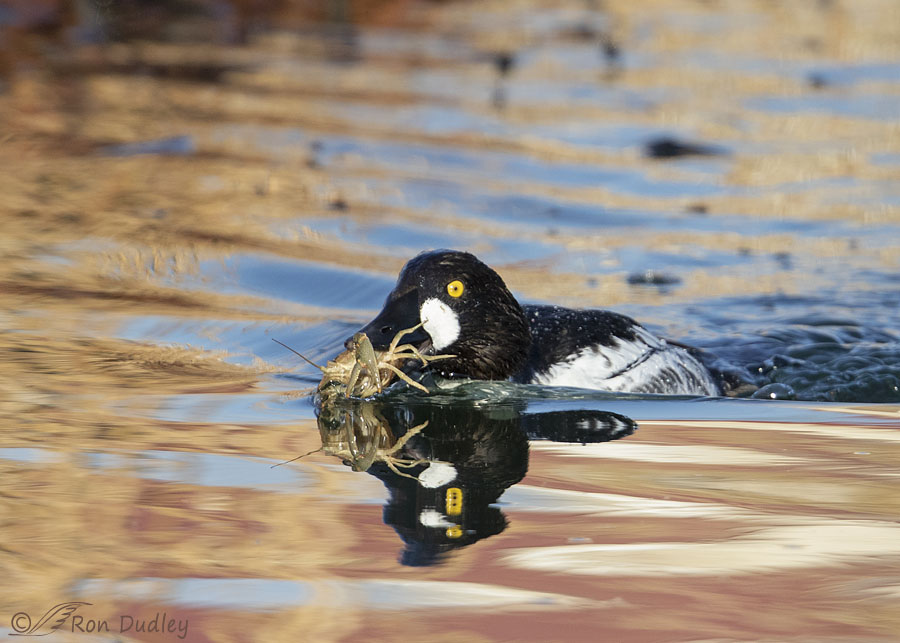
Four minutes later he’d captured crayfish #2. I was lucky because each time he caught one he swam closer to me in order to avoid other birds near the shore that might steal his prize.
One thing surprised me. There were lots of gulls nearby and usually gulls will attempt to steal prey, including crayfish, from other birds. But on this morning I never saw any such attempts. The gulls just sat on the water and ignored him and I don’t know why.
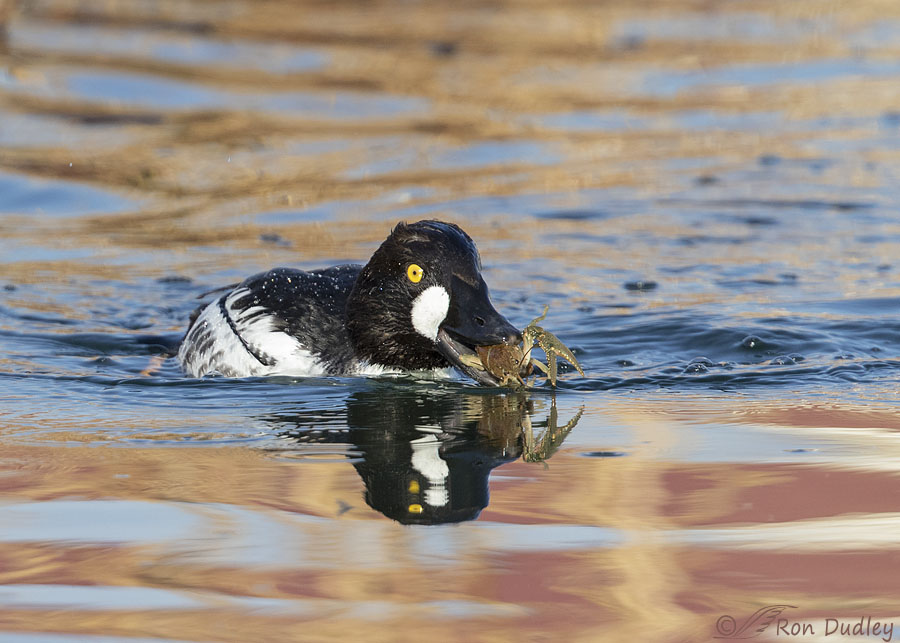
As soon as he got far enough away from the shore and other birds he…
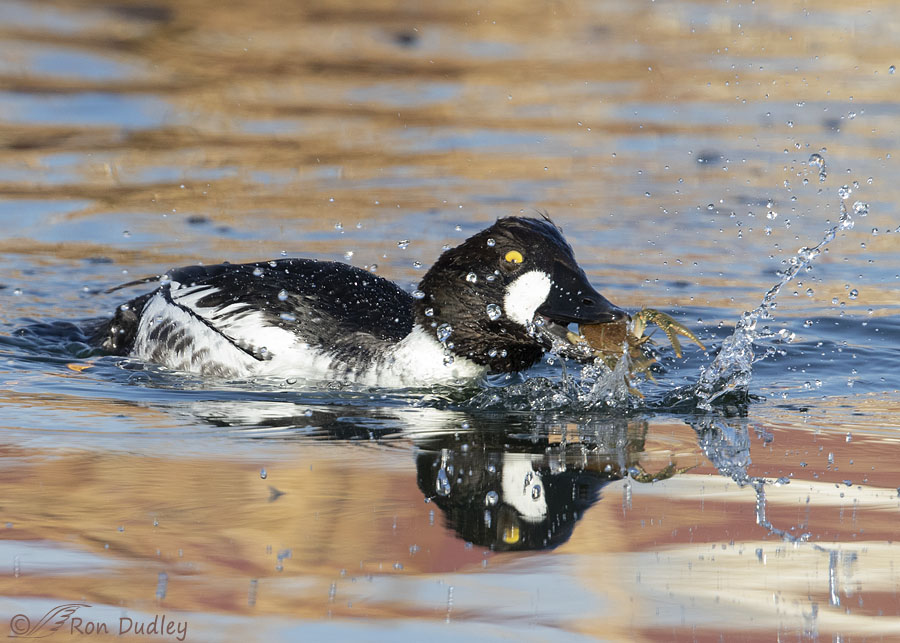
began his shaking routine with crayfish #2.
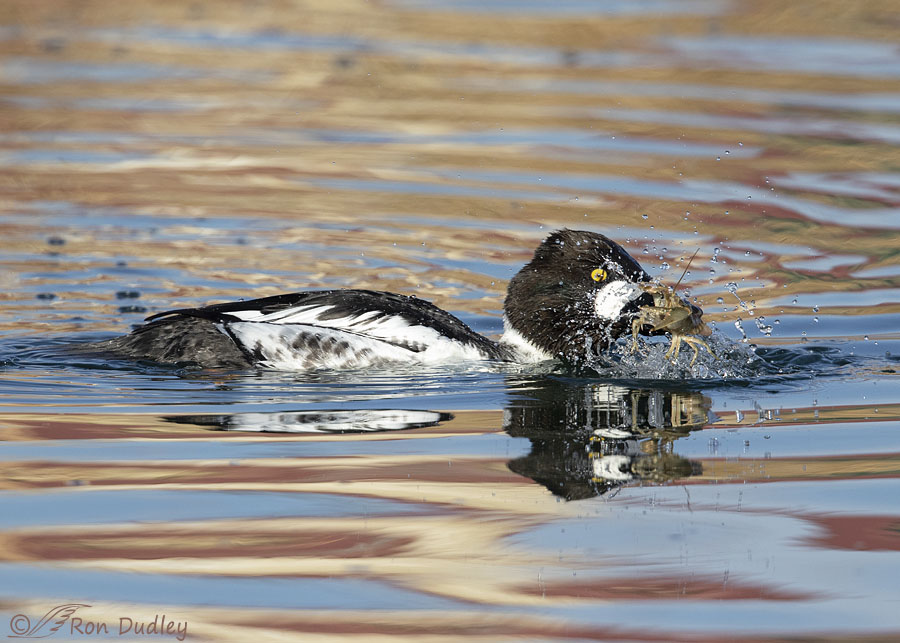
This time he kept it up for quite a while.
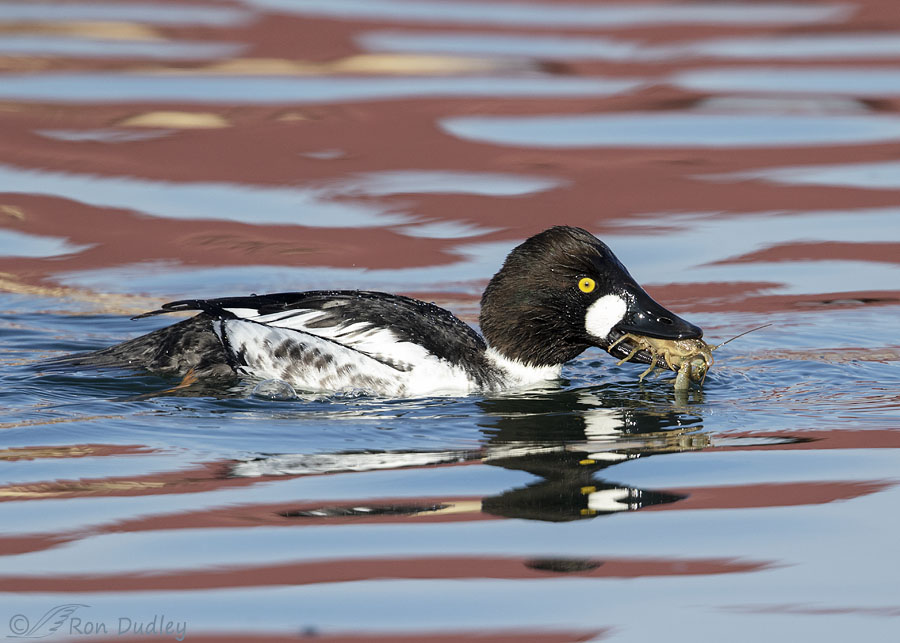
Soon the crayfish wasn’t moving much and eventually I thought…
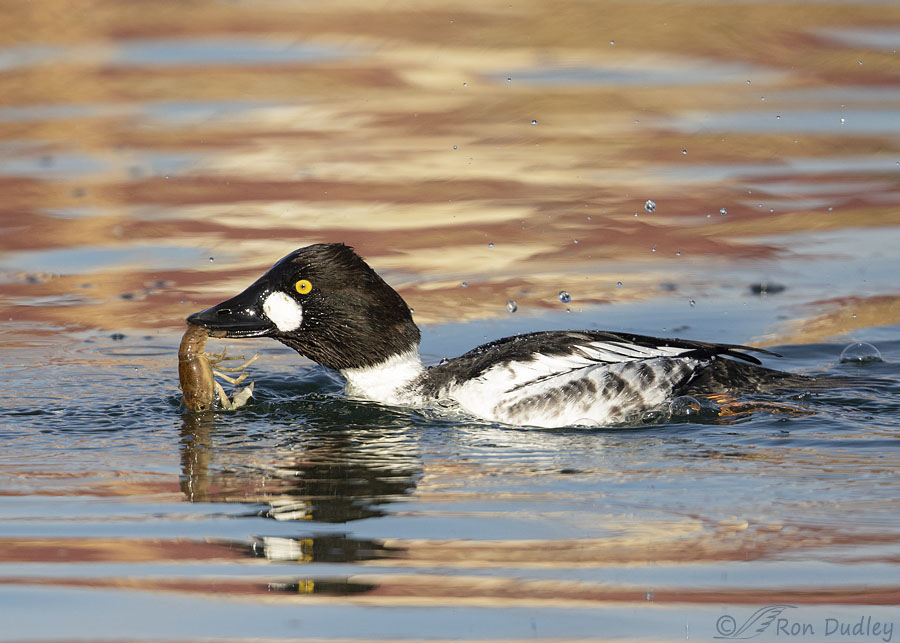
it might be dead. But he continued to shake it and…
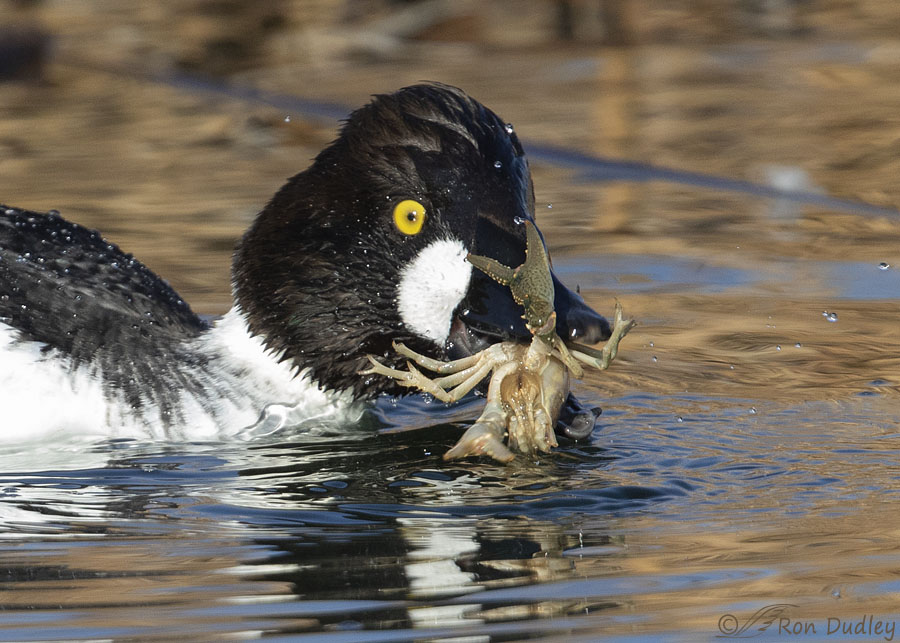
for good reason. 36 shots later at least one of the primary weapons of crayfish, two large pinching chelipeds or pincers, appeared to be primed for action. Even the much smaller pincers on the walking legs were open and apparently in defensive mode.
For those who may be interested, this crayfish is almost certainly a male. Crayfish “tails” (their abdomen really) have a pair of backward-pointing swimmerets on the ventral side of each segment and on males the anterior pair are enlarged and hardened. Even though the abdomen of this crayfish is kinda torn up it does appear to be a male.
After some more shaking the goldeneye turned his back to me (again) and swallowed the crayfish.
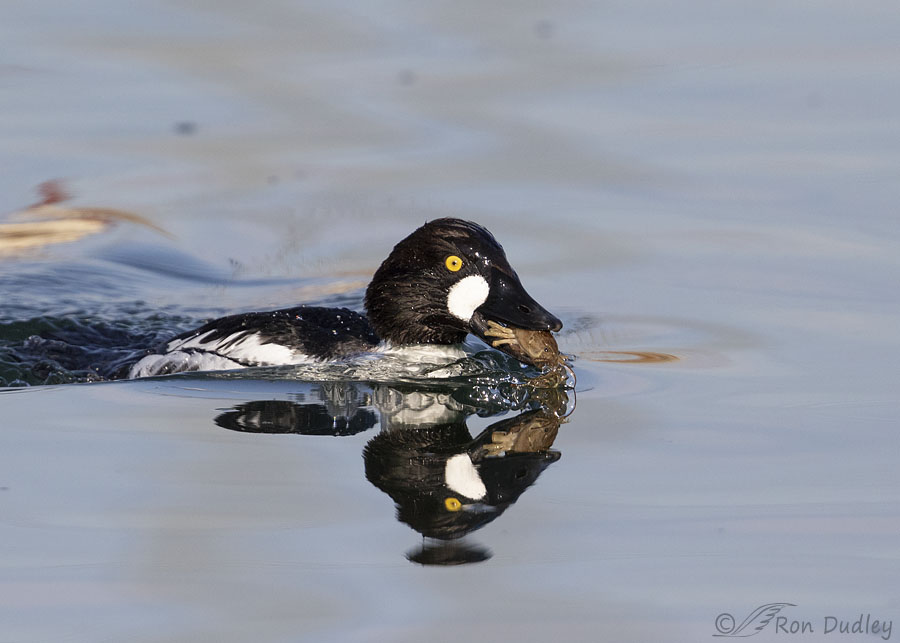
So, let’s move on to crayfish #3 which he caught about four minutes after swallowing crayfish #2. Not long after he captured this one I was lucky enough to document another reason why…
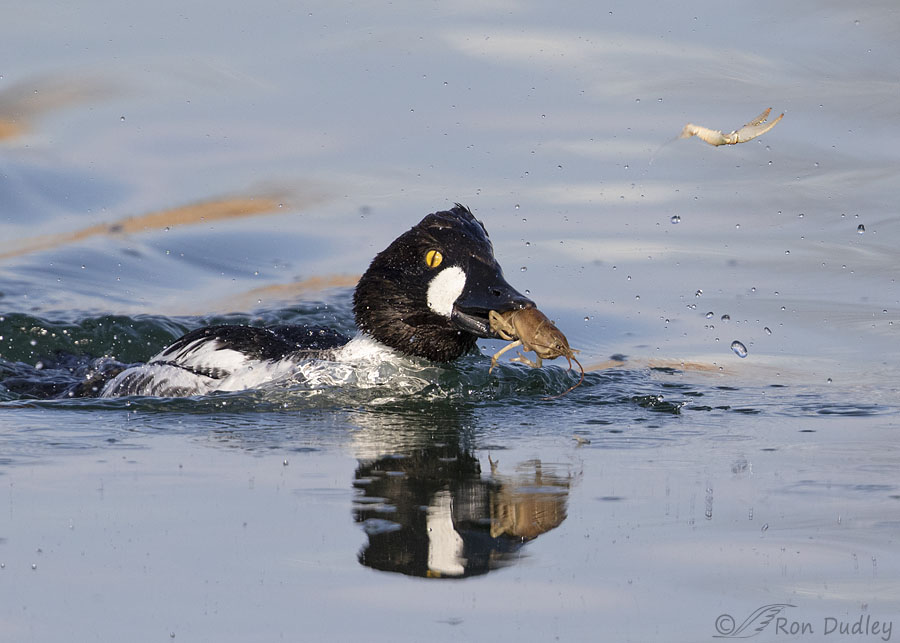
birds shake crayfish so violently, especially those crayfish with large pincers.
Besides being potentially dangerous the chelipeds are large and stick out from the body, making it difficult to swallow the crayfish whole with them still attached. So one of the purposes of shaking is to amputate the chelipeds. Here we see one of them flying off at upper right.
In the next shot in the burst that pincer was…
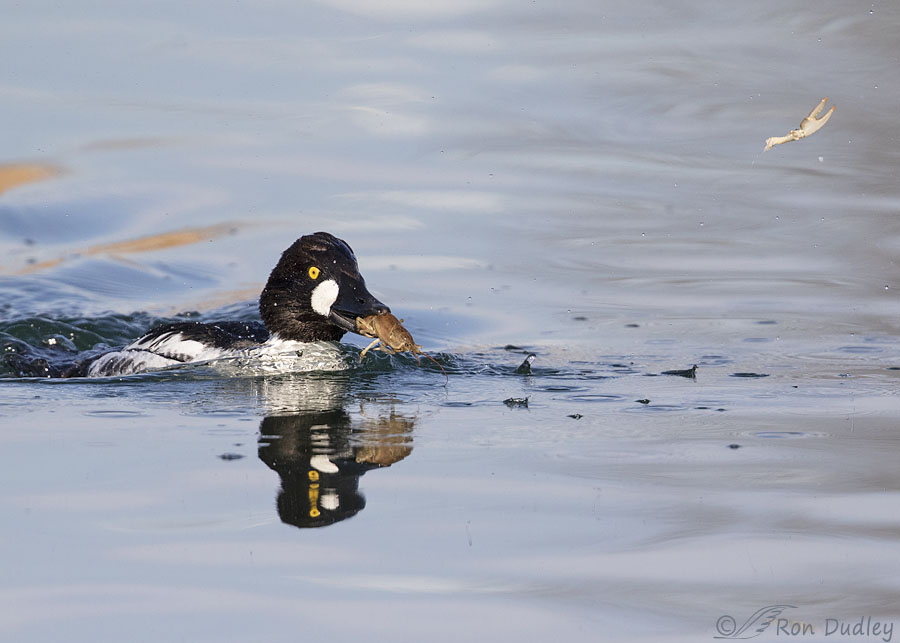
still flying through the air, which is an indication of just how violent the shaking was.
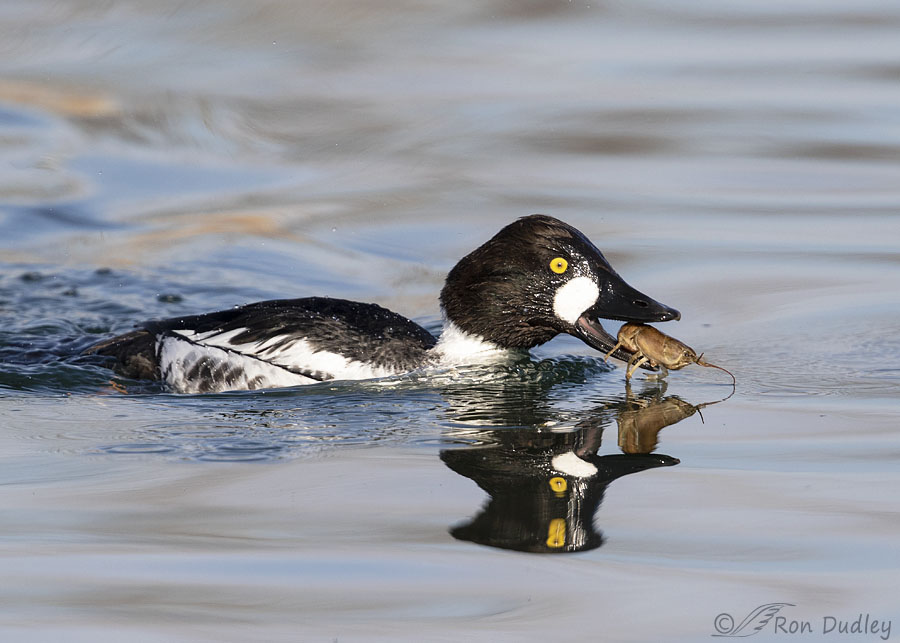
With both big pincers gone he…
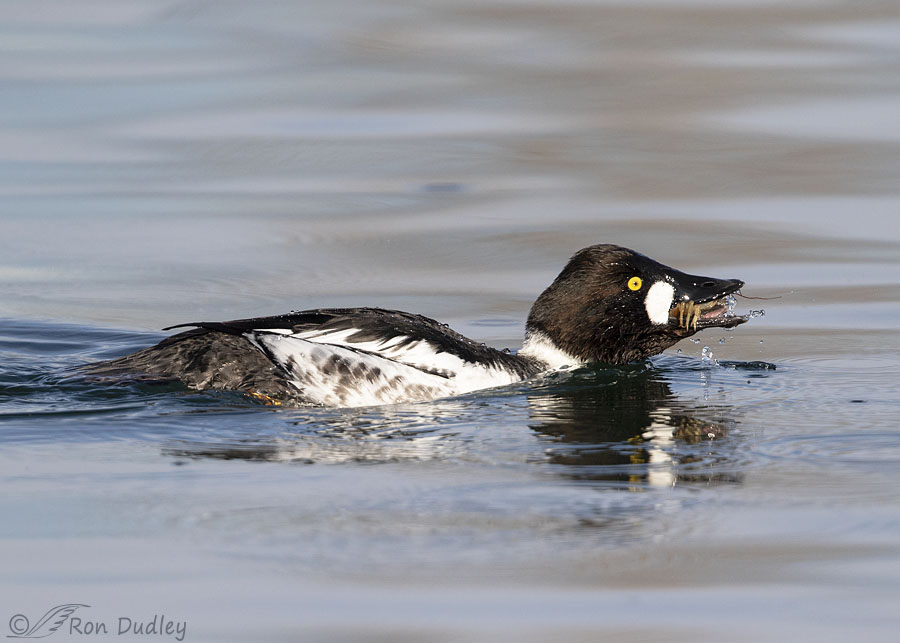
gobbled it down. This time he forgot to completely turn his back to me.
I’ve photographed Pied-billed Grebes using a similar shaking technique to remove the chelipeds many times but I believe this was the first time I captured it in Common Goldeneyes.
What’s good for the goose is good for the gander. Or something like that…
Ron
Note: Here’s what Cornell has to say about this technique in Pied-billed Grebes. I suspect much of it applies to other crayfish-eating birds, including Common Goldeneyes.
“Pinches and handles crayfish as it does fish. Removes larger claws by holding appendage in bill just behind claw, and vigorously shaking until claw breaks off. Swallows crayfish tailfirst; remaining appendages fold alongside prey body, facilitating swallowing”.


Sensational behavioral series Ron!
Charlotte Norton
Thanks, Charlotte.
Fabulous action shots with stunning reflections and perfect exposures. I’m calling it the Dudley Hat Trick. 🙂
Works for me!
The rippling reds and blues on the water reminded me of that beautiful photo of the Pied-billed Grebe from several days ago.
In the 11th shot the eye of the Goldeneye looks almost reptilian. I didn’t know their pupils could become thin slits like that!
Amy, that dark line isn’t his pupil. It’s the edge of his partially closed nictitating membrane, which he briefly closed to protect his eye during the shaking. His pupil is mostly hidden behind it.
I figured I was missing something. Thanks! I’m always open to learning more about birds! 🙂
I figured you would be.
My first thoughts upon reading this post’s title were what is a hunting hat and why would a duck wear one. Those reactions combined with thinking the foreground water in the first photo looked like stretched taffy completes my stupid hat trick. After that I completely enjoyed your photo essay.
I guess I could have, should have, chosen a less confusing title.
Whole lotta shakin’ goin’ on.
That’s for sure.
Wow – stunning sequence of photos and observations!
Thanks, Lois.
Clever, clever, clever.
Shaken but not stirred definitely works. But oh, what a dreadful way to die. My empathy self cannot comprehend being shaken so hard that my appendages fall off.
Thank you so much for another fascinating series.
“cannot comprehend being shaken so hard that my appendages fall off”
An interesting way to put it, EC.
Saw the flying pincer and thought ‘what the heck is that?’ Looks like an action packed morning Ron! Very educational!
Kathleen, for much of the morning it was pretty slow (and cold, 21° again). But then things definitely picked up.
Very interesting and you have some amazing sequences of sharp photographs to document things! What a way to for the crayfish! Thanks for the education, Ron!
Thank you, Ed. It was just one of those mornings when things came my way. I have hundreds of sharp photos of this guy doing his thing.
I love a wild animal sequence that tells a story or explains behavior, and you hit a home run with this one.. thanks for sharing!!
Good to know. Thanks, Ernest.
Yes…well said Ernest!
This was so eye-opening educational…thank you Ron !
Thanks, Carolyn.
P.S.– ” a hunting hat trick”— What does that mean ?
“Hat Trick” – three successes of the same kind, especially consecutive ones within a limited period.
“the band completes the trilogy, making for a dubious musical hat trick”
What a great sequence of pictures! Thank you Ron I learn so much from your posts.
Theresa in chilly North Carolina
Thanks, Theresa. It’s not so warm here either. 19° at the moment.
Flying Chelipeds ! It’s like an action movie and vocabulary lesson combined —
these images illustrate much better than words ever could just how necessary
that shaking act is– those pincers are huge and obviously dangerous !
“It’s like an action movie and vocabulary lesson combined”
I’m delighted you think so, Kris. That fits my intentions perfectly.
Ron – this is just what I needed to see, but never have. I have taken many photos of them and some doing the shaking, but have never gotten the detail you have here. Now I really understand what the shaking is all about. Outstanding photography and educational post. Much appreciated.
Thanks, Everett. It isn’t easy to catch flying pincers. You just need to take lots of photos and hope for some luck. Lots of luck, actually.
Wow, great photos and words to understand them! Still below 0 here in N Mass but light! Coffee’s on! Good Morning and thanks so much.
Thanks, Mary. My ration of three morning cups of coffee are almost gone.
Hi Ron,
Wonderful photos documenting the full process! Thanks for the info about id-ing males, which is new to me.
Am I right that hooded mergansers directly “bite” off the large pinchers instead of shaking them off?
Nancy, I don’t know the answer to your question. I don’t believe I’ve photographed a Hoodie with a crayfish.
However, some birds (including the Pied-billed Grebe in the link I provided) hold on to the pincer when they’re shaking so it’s the body of the crayfish that flies off instead of the pincer. I suspect which technique they use depends on the size of the pincer (because of relative weight of pincer vs body).
Wonderful series, Ron! 🙂 They must have pretty good sized stomachs to do 3 of them in fairly short order….. Reviewing the older post comments I was reminded of visiting a younger sister in TX and her warning her husband not to “suck crawdads” in front of me at dinner – she KNEW that wasn’t going to fly but my dinner might… 😉
Thanks, Judy. I got a big kick out of your last sentence!
Interesting!
Good.